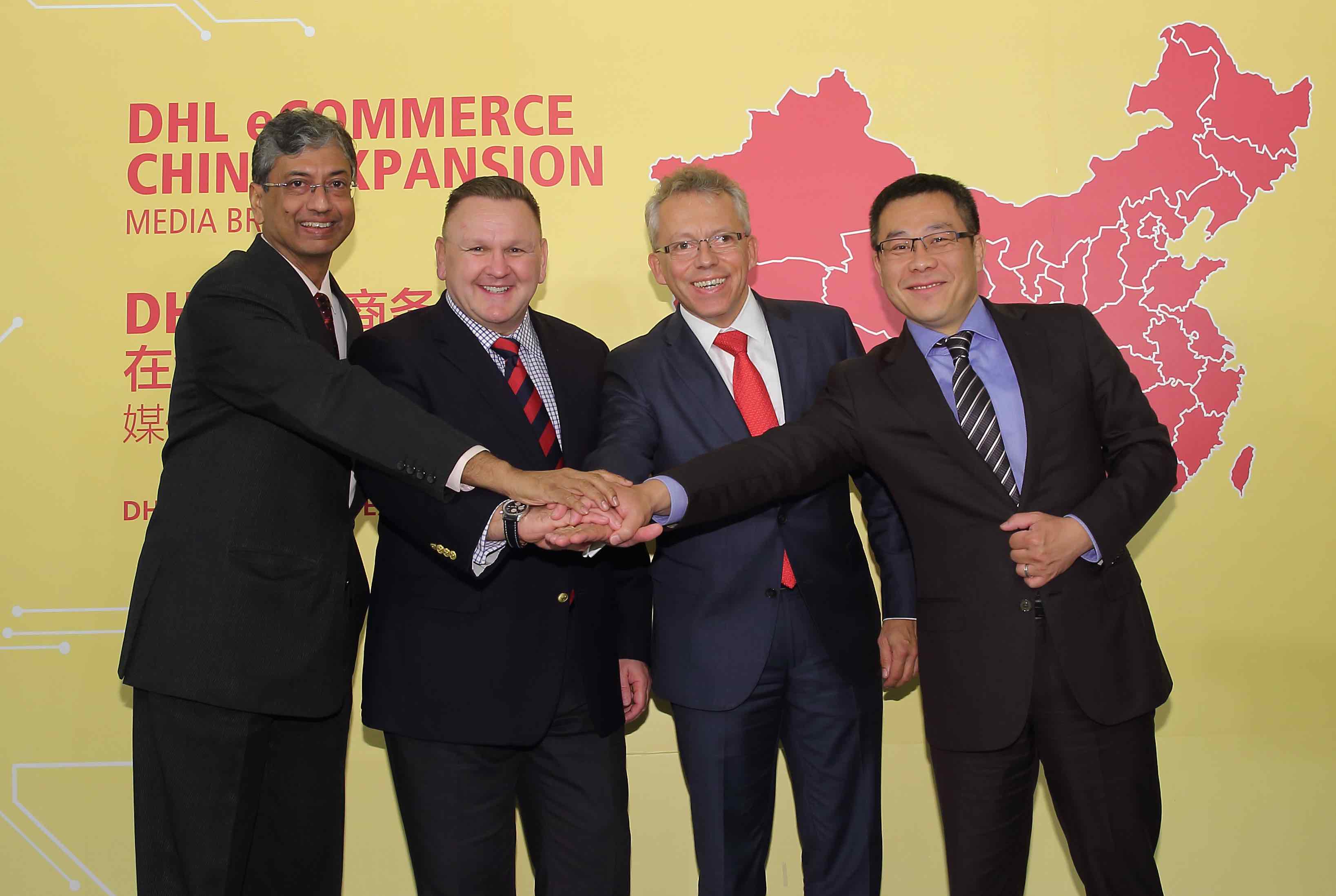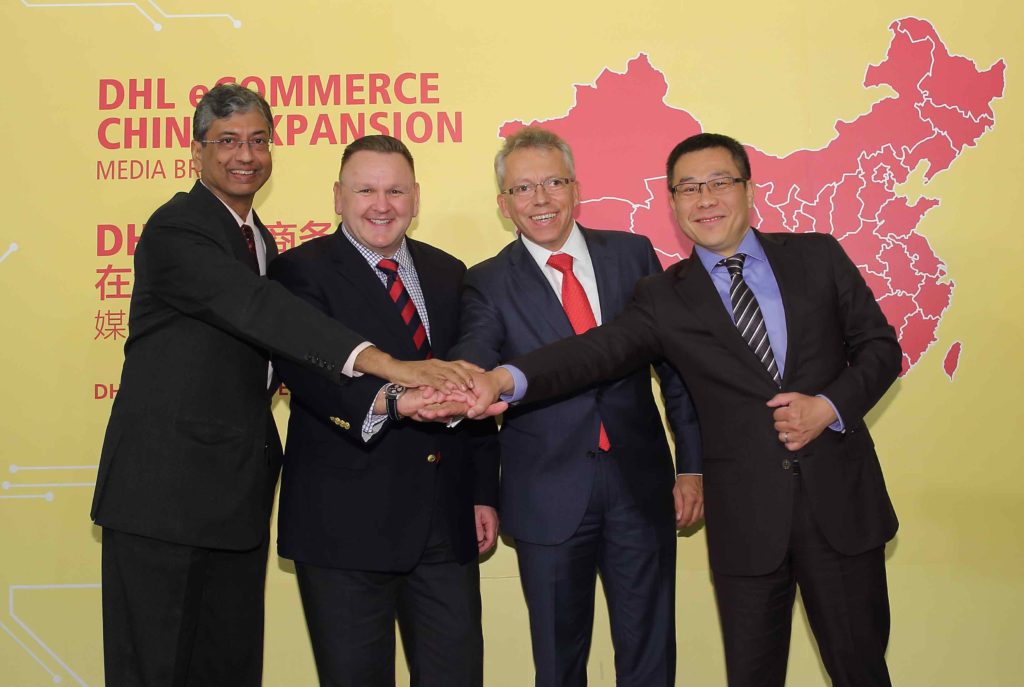
(l-r): Malcolm Monteiro, CEO, Asia Pacific, DHL eCommerce; Charles Brewer, CEO, DHL eCommerce; Thomas Kipp, EVP, Strategy & Business Development, Post – eCommerce – Parcel; Zhi Zheng, managing director, DHL eCommerce China
DHL eCommerce, a division of Deutsche Post DHL Group, has announced plans to grow its overall presence in China by over 50 per cent as online retail and the corresponding demand for quality logistics solutions continues to soar. As part of this, the company has opened its new DHL eCommerce Shenzhen Distribution Center, and will also expand its existing distribution centers in Shanghai and Hong Kong to support the growth of online retailers.
“Cross-border e-commerce already accounts for almost 20 per cent of China’s foreign trade and the country’s B2C e-commerce market is expected to grow at a CAGR of over 30 per cent from now till 2020,” said Malcolm Monteiro, CEO, Asia Pacific, DHL eCommerce. “With the ability to scale up its size by 150 per cent, the DHL eCommerce Shenzhen Distribution Center is fully capable to support this growing demand over the coming years,” he said.

The DHL eCommerce Shenzhen Distribution Center supports the booming manufacturing sector in Shenzhen and the growing base of Chinese online retailers. With the capacity to handle up to 18 million shipments a year, the distribution center will allow for faster, more streamlined shipment and clearance of e-commerce exports to the rest of the world. This enables local online retailers to reach a global customer base through DHL’s network of over 220 countries and territories worldwide.
Serving as the consolidation point for all South China international outbound shipments, the distribution center in Shenzhen bolsters DHL eCommerce’s footprint in China, along with dedicated customer service support for online retailers in the city.
“We see significant potential in China’s e-commerce sector, particularly between China and the US, where we’ve seen triple digit growth since 2015,” said Charles Brewer, CEO, DHL eCommerce. “With China accounting for more than 40 per cent of global retail e-commerce sales in 20151, our investments in China demonstrate our focus on developing efficient and reliable logistics services, to bring high quality e-commerce services to Chinese retailers and meet changing consumer expectations.”









